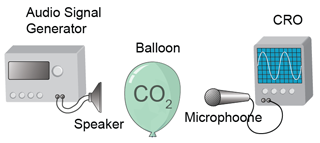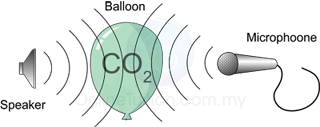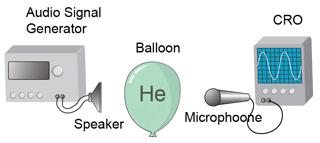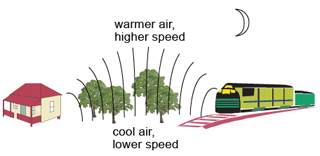Experiment 1

Result

The amplitude of the sound wave increases when a balloon filled with Carbon dioxide is placed between the speaker and the microphone.
Explanation

- Carbon dioxide is denser than air.
- The sound wave is refracted approaching the normal when the wave propagates from the air into the balloon, and away from normal when moving out from the balloon.
- As a result, the balloon acts as a biconvex lens and converge the sound wave at a point.
Experiment 2

Result

The amplitude of the sound wave decreases when a balloon filled with Carbon dioxide is placed between the speaker and the microphone.
Explanation

- Helium gas is less dense than air.
- The sound wave is refracted away from the normal when the wave propagates from the air into the balloon, and closer to the normal when moving out from the balloon.
- As a result, the wave is diverged to a wider area and causes the amplitude of the sound wave decreases.
Phenomenon Related to Refraction of Sound Wave

Observation
The sound of a distance train is clearer at night.Explanation
At night, the air closer to the ground is cooler than the air further from the ground.Sound wave travels slower in cool air. As a result, the sound wave is refracted in the path of curve towards the ground instead of spreading to a wider area (as at daytime).